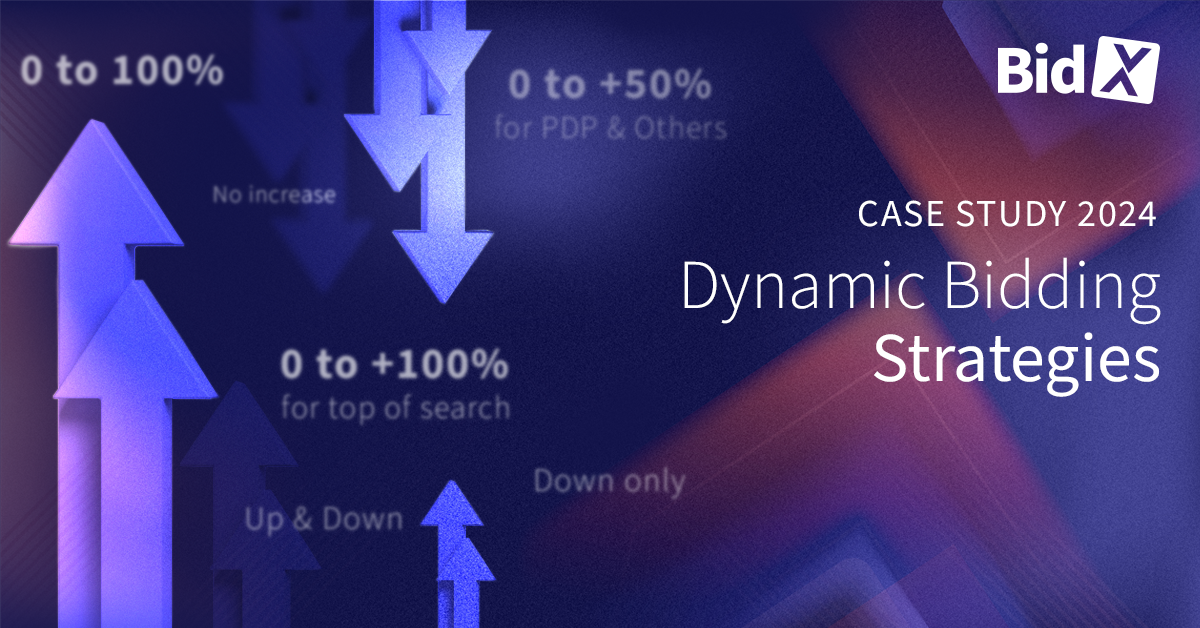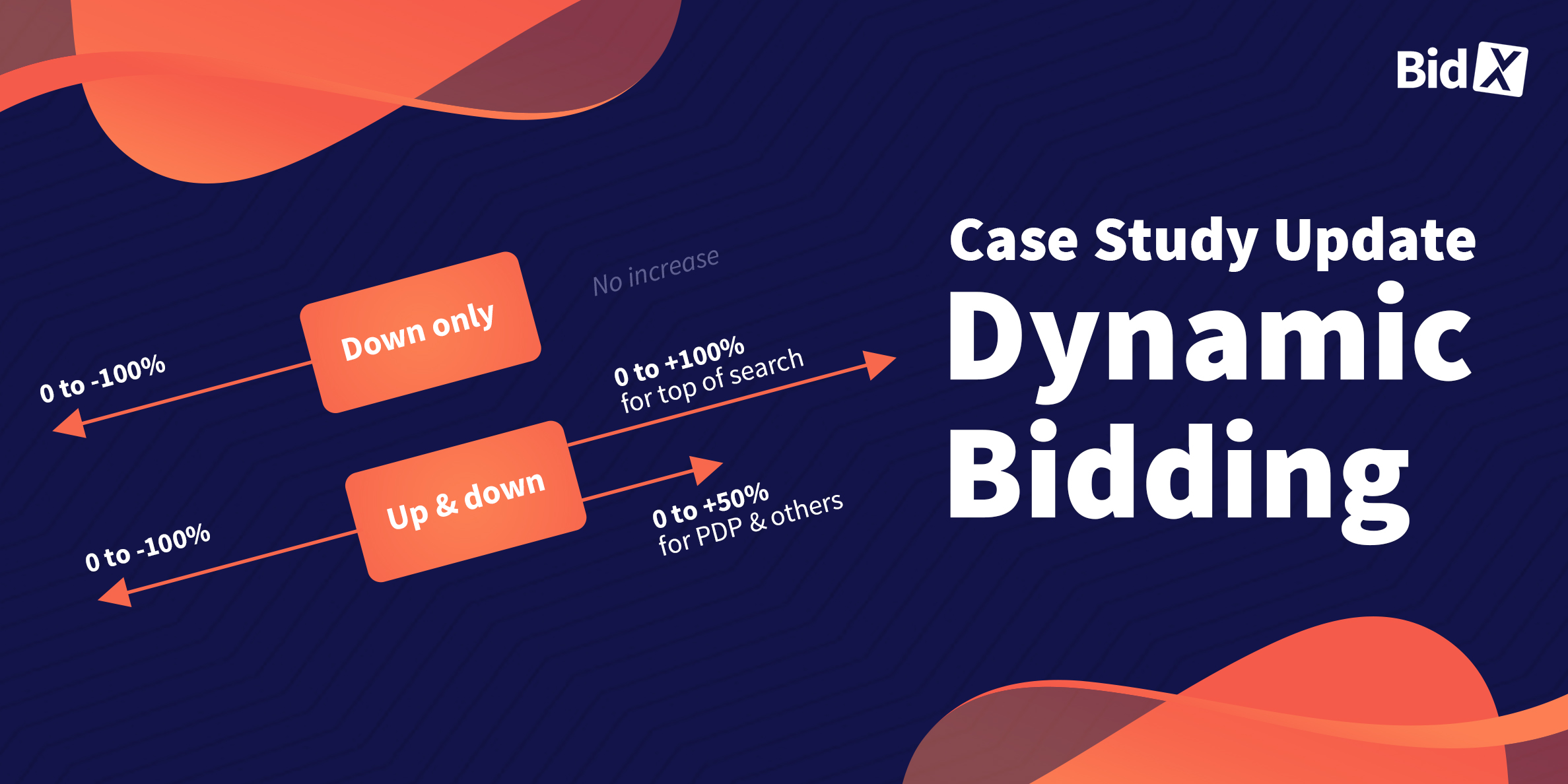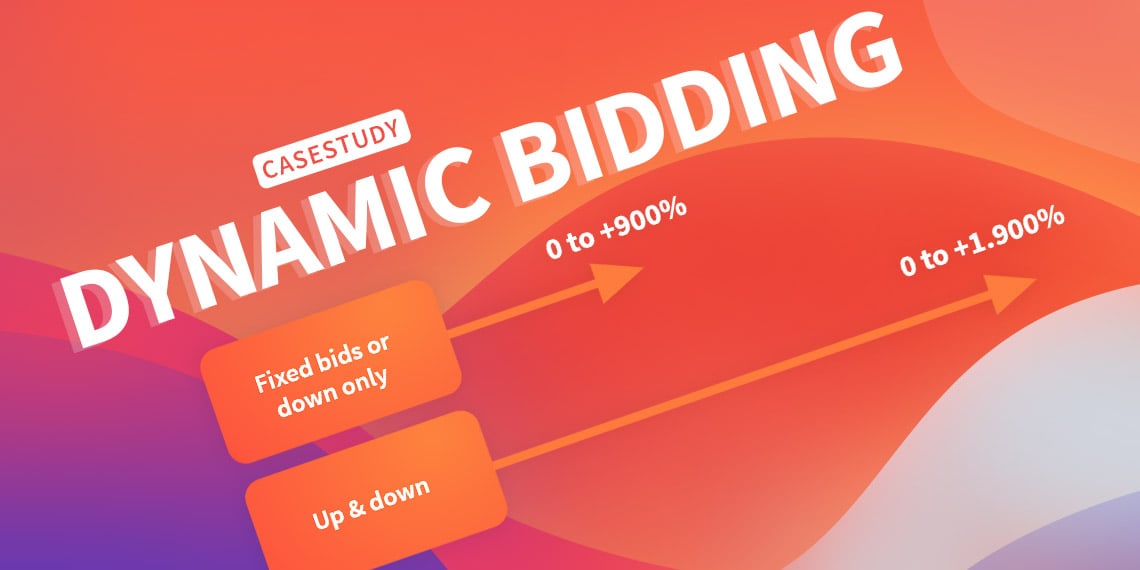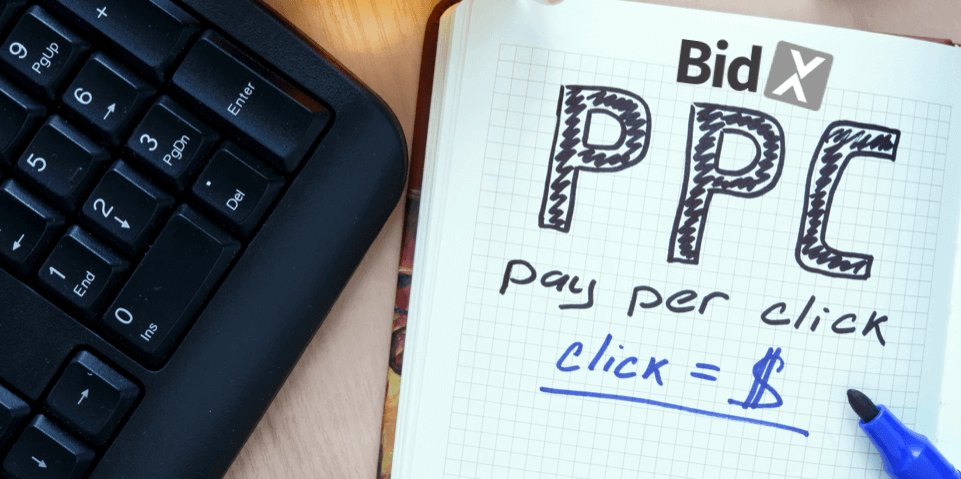Case study on the dynamic bidding strategies of Amazon 2024
Since 2019, Amazon offers three different bidding strategies for Sponsored Product Ads (SPA). In addition to fixed bids, there are two dynamic bidding strategies to choose from, which allow bids to be adjusted based on the customer's purchase probability. These bidding strategies include "Dynamic bids - down only" and "Dynamic bids - up and down".
In the following, we will first explain these strategies and the placement bids before presenting an analysis that compares the different bidding strategies and the performance of bids by placement. Based on these results, we conclude with recommendations for action for Amazon sellers and the optimal application of dynamic bidding strategies.
- What bidding strategies are there?
1.1 Fixed bids
1.2 Dynamic bids - down only
1.3 Dynamic bids - up and down - What are placement bids?
- Analysis of the various bidding strategies and placement bids
- Recommendations for action from BidX
- Conclusion
We have already conducted case studies on the dynamic bidding strategies in 2019 and 2021 (Case Study 2019, Case Study 2021). In this update, we provide a new analysis to review the effectiveness of the different strategies in 2024 and assess whether they have changed over time. If you already have a good overview of the bidding strategies, you can jump directly to the current analysis.
You are also welcome to watch our video on dynamic bidding strategies:
What are the bidding strategies on Amazon?
There are currently (April 2024) three different bidding strategies on Amazon. These are “Fixed bids”, “Dynamic bids - down only” and “Dynamic bids - up and down”. The settings for all bidding strategies are applied at campaign level, which means that they apply to all bids within the respective campaign. The settings can be changed at any time.

In the following, we will take a closer look at the individual bidding strategies.
1. Fixed bids
If you opt for the "Fixed bids" strategy, Amazon will not change your bids, regardless of whether there is a high probability of purchase or not.
Please note: This does not mean that the actual click price will always correspond exactly to your bid.
2. Dynamic bids - down only
The "Dynamic bids - down only" strategy can reduce your bids by up to 100% in real time, especially for clicks where the likelihood of a subsequent product purchase is low.
Let's say you bid €1.50 on a particular keyword and Amazon rates the likelihood of purchase as low. In this case, the bid could be reduced to €1, €0.40 or even €0, for example.
Note: Campaigns created before 2019 automatically use this strategy.
3. Dynamic bids - up and down
The "Dynamic bids - up and down" strategy not only enables bids to be lowered if a purchase is unlikely, but also allows bids to be increased if a purchase is likely.
The maximum percentage increase in bids depends on the ad placement. For ads in the top search results, bids can be increased by up to 100%, while a maximum increase of 50% is possible for all other placements.
Let's say you bid €1.50 for a keyword and have activated the "Dynamic bids - up and down" strategy. In this case, the bid for an ad in the top search results could be increased to up to €3 if Amazon detects a high purchase probability. For all other placements, the bid could be increased to a maximum of €2.25. If the probability of a purchase is low, the bid can be reduced to up to €0.
What are placement bids?
In addition to the various bidding strategies, bids can also be adjusted for specific placements on Amazon. This includes placements in the top search results, on product detail pages and in the rest of the search.

Amazon has the ability to increase bids by up to 900% when ads are competing for these placements. You have full control over the maximum percentage by which bids can be increased.
Note: Placement bids can also be used in conjunction with dynamic bidding strategies. If both "Bids by placement" and "Dynamic bids - up and down" are activated, the bids for placements in the top search results can be increased by a factor of 20.
Example: If the standard bid is EUR 1.50, it can be increased by 900% to EUR 15 using "Bids by placement". Using "Dynamic bids - up and down", this EUR 15 can theoretically be increased by a further 100% to EUR 30 (+1,900%).
It is advisable to carefully consider how the dynamic bidding strategies in combination with placement bids could influence each other. Although it is extremely unlikely that Amazon will increase your bid as drastically as in our example, it is still important to pay attention.
Analysis of the various bidding strategies and placement bids
In our current analysis period from February 1, 2024 to February 29, 2024, we examined around 130,000 campaigns and analyzed their performance with regard to the various bidding strategies. The results of this analysis can be found in the table below:

The best performance values for the individual key figures are highlighted in green. It is striking that the campaigns that use the "down only" strategy have a better average conversion rate and a lower ACoS. The click rate is only 0.02% lower. Despite the higher CPC, the ACoS is lowest for the "down only" strategy. It can therefore be concluded that the campaigns with the "down only" strategy were the most profitable in our test. This result is also consistent with the analyses we conducted in 2019 and 2021.
As the "down only" strategy generally achieved better results than " up and down", we examined the campaigns with the "down only" bidding strategy for differences in performance depending on the "Bids by placement" setting. The results are shown in the following table:

In this table too, the best values of the four key figures under consideration are highlighted in green. If the increase in bids for "placements on the first search results page" was set higher than 0%, the best values are shown for click rate and conversion rate. However, the average cost per click is €0.30 higher than with a 0% increase for placements in the first search results. The ACoS is also almost 5 percentage points higher. For placements on product detail pages, setting the bid increase above 0% results in an average ACoS of 21.65%, which is the worst performing.
These results are also in line with our previous analyses.
Recommendations for action from BidX
Choosing the right bidding strategy depends primarily on your specific advertising goals. If you are mainly aiming for profitability, it is advisable to use the "Dynamic bids - down only" strategy as it usually offers a higher conversion rate and better ACOS. The "Dynamic bids - up and down" strategy is more suitable for a product launch, as it aims to raise awareness of the product and is less focused on immediate profitability. However, it should also be noted that the results of your advertising campaigns may not always reflect what our test has shown.
We have visualized recommendations for placement bids in the following graphic:

Placements for first search results:
For placing ads in the first search results, we recommend first cutting the bid in half and then increasing it by around 104% for manual keyword campaigns. For example, if your maximum CPC was originally $1, lower it to $0.50 and then allow the bid to be increased by a maximum of 104%. As a result, with a bid of $1.02 you are only slightly above your original maximum CPC and also outbid competitors who have typically chosen 100% or $1 as their bid.
Bids for placements on product detail pages:
For ad placements on the product detail pages in manual campaigns with product targeting (PAT), we recommend first quartering the bids and then increasing them by about 304%. For example, if your maximum CPC was originally $1, lower it to $0.25 and allow a maximum increase of 304%. As a result, with a bid of $1.01 you are only slightly above your original maximum CPC and outbid competitors who have typically chosen 300% or $1 as their bid.
If you have any questions about these bidding strategies, please feel free to contact us at hello@bidx.io.
Conclusion
Choosing the right bidding strategy can have a significant impact on the success of your ad campaigns. Which strategy is best for you depends primarily on your products and the goals of your advertising campaign. By using the right bidding strategies and placement bids, you can make a significant contribution to increasing the success of your ads on Amazon.
The BidX platform allows you to easily customize your bidding strategies and placement bids. A special feature is the ability to view and adjust all campaigns at a glance. Compared to the Advertising Console, where each campaign has to be opened and edited individually, this saves you a considerable amount of time and effort. If you would like to find out more about the BidX platform, feel free to book a non-binding expert consultation.






